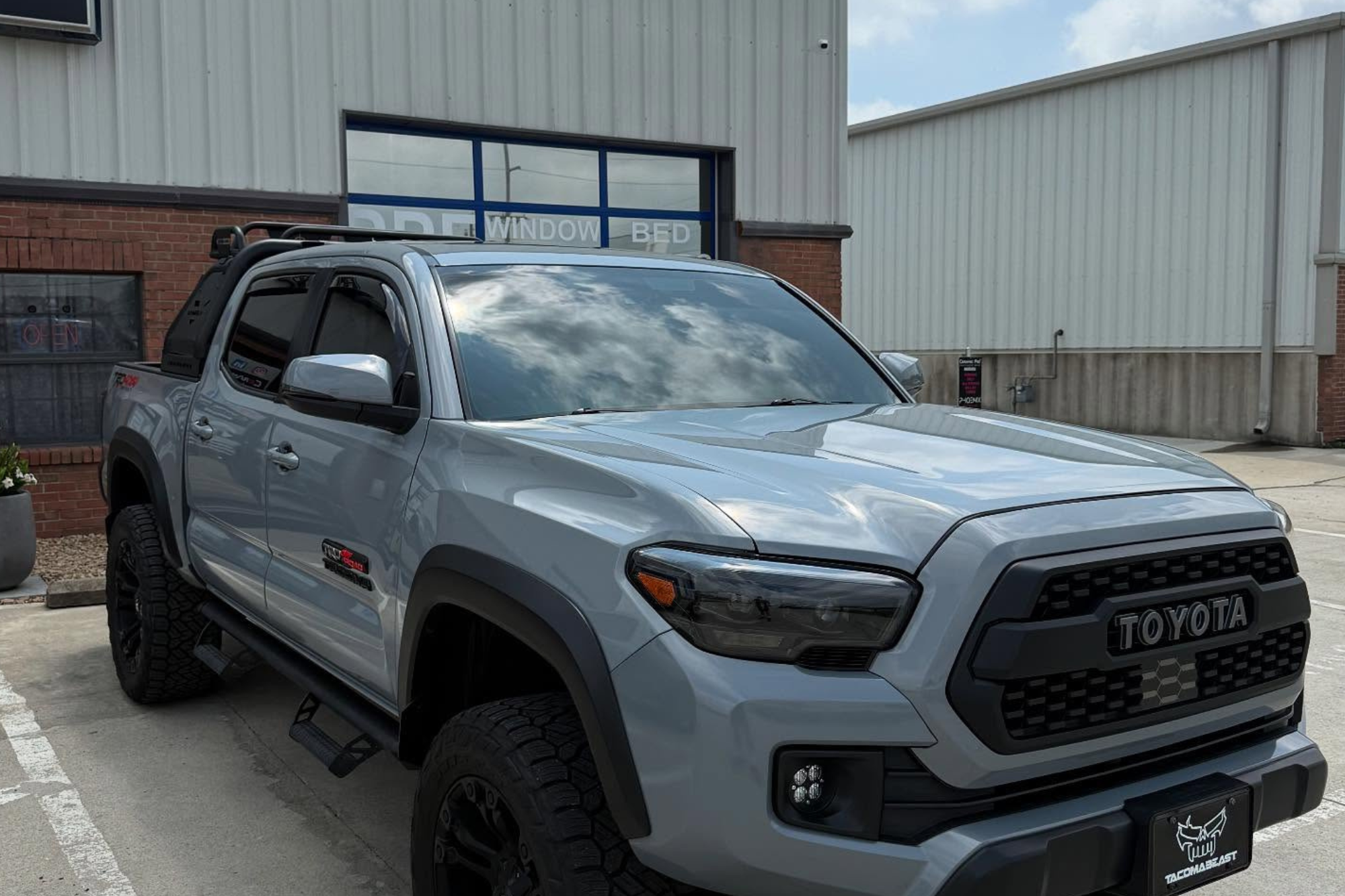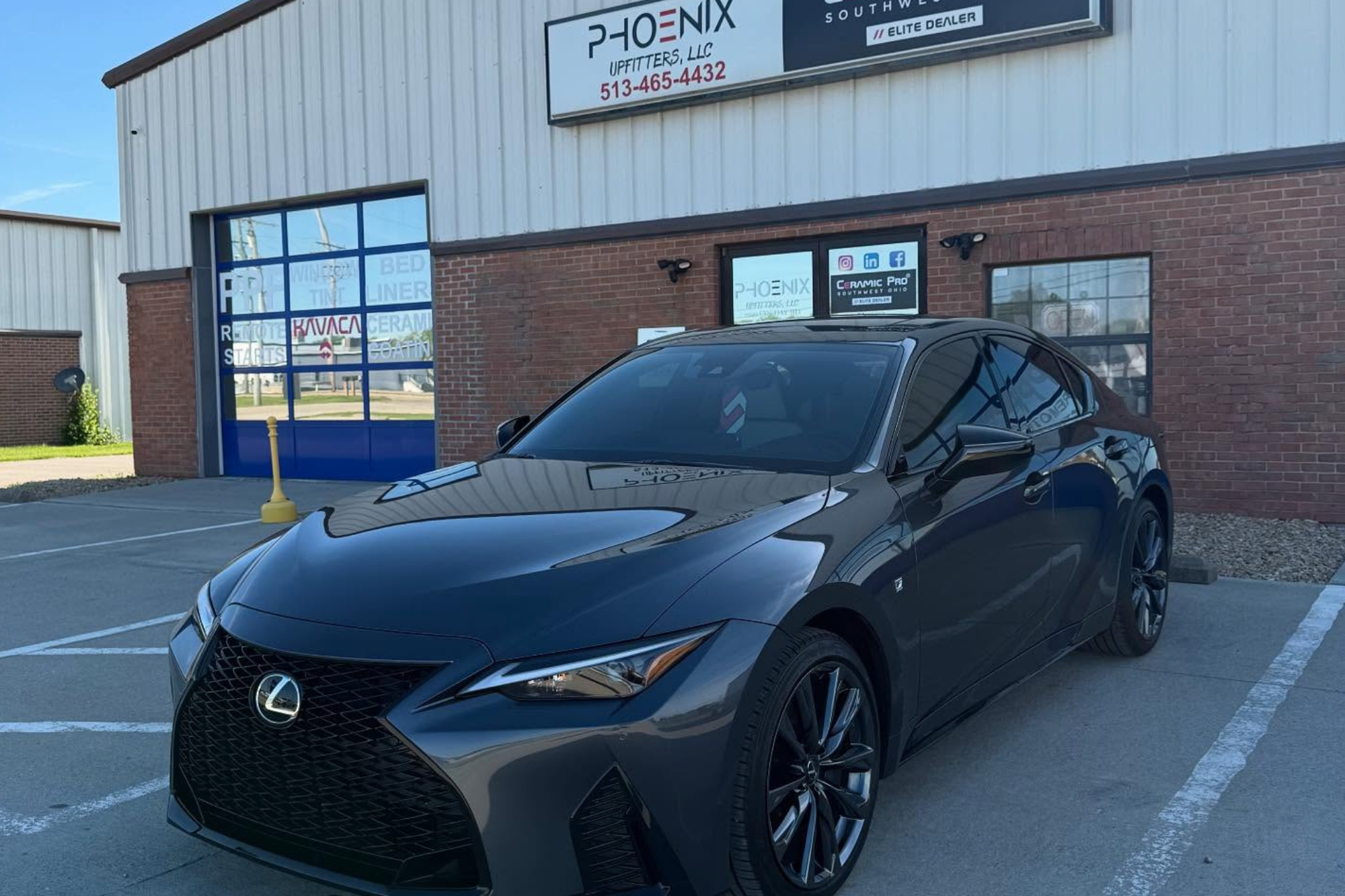As you commence the ceramic window tint installation journey, each meticulous step plays a vital role in achieving your desired flawless finish. Every detail matters, from the initial cleaning of the window surface to the final inspection, ensuring perfection. The precision of cutting, the skillful application of adhesive, and the careful removal of air bubbles all contribute to the result. Now, imagine the satisfaction of seeing your windows transformed into sleek, UV-protective barriers against the sun’s harsh rays.
Key Takeaways
- Thoroughly clean the window surface with detergent.
- Measure and cut ceramic film precisely.
- Apply the adhesive solution evenly with a squeegee.
- Trim excess film for neat edges.
- Cure tint for 3-5 days for optimal adhesion.
Prepping the Window Surface
Proper preparation of the window surface is essential before applying ceramic window tint to guarantee a successful installation. The first step in window preparation techniques is to clean the surface thoroughly. Start using a mild detergent or specialized window cleaning solution to remove dirt, dust, or grime. Confirm that the cleaning solution is non-abrasive to prevent minor glass scratching. After cleaning, it’s essential to dry the window completely using a lint-free cloth or squeegee to avoid leaving streaks or residue behind. Any remaining moisture can interfere with the ceramic film’s adhesion. Inspect the window closely to ensure no spots are missed during the cleaning process. In addition to cleaning, you may also need to use surface cleaning methods like rubbing alcohol or a vinegar solution to remove any stubborn contaminants such as grease or adhesive residue. These substances can impact how well the ceramic tint adheres to the glass, so thorough removal is necessary for a seamless installation.Cutting the Ceramic Film
When it comes to cutting the ceramic film for your window tint installation, precision is critical. Utilize specialized tools such as a sharp utility knife or tinting shears for accurate cuts. Always prioritize safety by wearing protective gloves and ensuring the work area is well-lit and free of distractions.Precision Cutting Techniques
Mastering precision cutting techniques is vital to achieving seamless ceramic window tint installation. Attention to detail is critical when cutting the ceramic film with film precision. Begin by ensuring your work area is clean and well-lit so you can see the film’s edges accurately. Use a sharp utility knife with a fresh blade to make precise cuts without tearing the film. Measure and mark the film according to the window’s dimensions, then carefully cut along the lines using steady, controlled motions. Practice makes perfect when it comes to honing your cutting techniques. Take your time and don’t rush the process – patience is essential for achieving clean and accurate cuts.Tools for Accurate Cuts
Mastering precision cutting techniques is the foundation for flawless ceramic window tint installations. When it comes to tools for accurate cuts, having the right equipment is vital. Here are four key elements to take into account:- Cutting Tools: Invest in high-quality precision cutting tools such as a sharp utility knife or a dedicated tint cutting tool to guarantee clean and accurate cuts on the ceramic film.
- Film Types: Understand the specific characteristics of ceramic window tint films. They’re known for being durable, heat-resistant, and providing excellent clarity compared to other film types. This knowledge will help you choose the right tools and techniques for cutting.
- Measurement Techniques: Accurate measurements are essential for a seamless installation. Use a ruler or measuring tape to verify precise sizing before cutting the ceramic film.
- Installation Tips: To avoid errors, lay the film on a cutting mat or a clean, flat surface before cutting. This will help you achieve straight and even cuts, producing a professional-looking finish.
Safety Measures During Cutting
Prioritizing your well-being and the quality of the final result is paramount for safe and efficient cutting of the ceramic film during installation. Always wear safety gloves and protective eyewear to shield yourself from potential injuries. Confirm your workspace is organized, with clear pathways and easy access to emergency procedures. Proper ventilation is essential to prevent inhaling harmful fumes during cutting. Use a steady, flat surface to maintain cutting surface stability. Handle cutting tools with care, following manufacturer guidelines for safe usage. Store the ceramic film in a cool, dry place away from direct sunlight to preserve its quality. These safety measures will protect you and set the stage for a successful window tint installation.Applying the Adhesive Solution
Using the appropriate adhesive solution is essential in guaranteeing a successful ceramic window tint installation. Here are some critical steps to guide you through the process:- Selecting the Right Adhesive Solution: Choose an adhesive solution designed explicitly for window tinting. Look for products that offer adhesive solid properties while being safe for the type of surface you’re working on.
- Preparing the Surface: Before applying the adhesive solution, make sure the window surface is clean and free of any dirt, dust, or debris.
- Applying the Adhesive: Using a spray bottle, apply a thin and even layer of the adhesive solution to the inside of the window.
- Allowing for Proper Drying Time: The adhesive solution will dry according to the manufacturer’s instructions.
Squeegeeing the Film
Once the adhesive solution has been applied and adequately dried, squeegeeing the film is the next vital step in ceramic window tint installation. This process guarantees a smooth and professional finish. Various squeegees are available, such as hard cards and soft squeegees. Hard card squeegees are effective for removing excess water and bubbles, while soft squeegees are gentler and ideal for delicate areas. To squeeze the film effectively, start from the center and work outwards. Use gentle pressure to push out any remaining air bubbles towards the edges. Make sure to overlap each stroke slightly to guarantee complete coverage. Pay special attention to the corners and edges to prevent lifting or peeling over time. When using a squeegee, hold it at a slight angle to avoid scratching the film. Work methodically and systematically, ensuring the film adheres properly to the glass. If you encounter any stubborn bubbles, try heating the film with a heat gun to help release them. Continue squeegeeing until the film is smooth and free of imperfections. This meticulous process will result in a flawless ceramic window tint installation that you can take pride in.Trimming Excess Film
The next step is trimming excess film after successfully squeegeeing the film to achieve a smooth and professional finish during your ceramic window tint installation. Guaranteeing a precise and clean trim is essential to your tint job’s overall appearance and longevity. Here are the steps to effectively trim excess film:- Inspect the Edges: Carefully examine the edges of the tint to identify any excess film that needs to be trimmed. Make sure to check all sides of the window for consistency.
- Use a Sharp Blade: To trim the excess film, use a sharp, precision blade. A sharp blade guarantees clean cuts without damaging the tint or leaving jagged edges that could affect film durability.
- Follow the Contour: Trim along the edges of the window, following the contour closely. Take your time to avoid cutting into the glass or leaving gaps that could compromise the installation.
- Smooth Out the Edges: Use a heat gun or hairdryer to gently heat the film’s edges after trimming. This will help the movie adhere better to the glass and create a seamless finish, enhancing aesthetics and film durability.
Curing Process
The ceramic window tint installation curing process involves applying heat using a specialized method to guarantee ideal results. This procedure helps the tint adhere to the glass effectively, enhancing its longevity and performance. Understanding the timeframe for curing is essential for achieving a flawless finish.Heat Application Method
Using heat during the application process of ceramic window tint is an essential step that guarantees proper curing and adhesion. To ascertain the best results, follow these steps:- Pre-Heating: Before applying the ceramic tint, pre-heat the surface to improve heat retention during curing and promote energy efficiency.
- Uniform Heat Application: Using a heat gun or lamp to distribute heat evenly across the tinted surface ensures proper adhesion and curing.
- Optimal Temperature Control: Maintain the temperature within the recommended range to facilitate the curing process without damaging the tint film.
- Post-Application Heat Treatment: After installation, carefully apply heat to the tinted area to finalize the curing process, ensuring long-lasting performance and a professional finish.
Timeframe for Curing
As you progress from guaranteeing proper heat application during the ceramic window tint installation process, the timeframe for curing becomes a critical factor in achieving ideal results. The curing duration, which refers to the time needed for the tint to adhere to the window entirely, is influenced by various environmental factors. The typical curing duration for ceramic window tint is 3 to 5 days. However, this timeframe can vary based on temperature, humidity, and sunlight exposure. During the curing process, it’s essential to avoid rolling down the windows or cleaning them to allow the tint to set correctly. High temperatures can expedite the curing process, but be cautious of direct sunlight as it may cause the tint to cure too quickly, leading to potential imperfections. Conversely, colder temperatures may prolong the curing duration.Final Inspection
Conducting a thorough final inspection upon completing the ceramic window tint installation is vital. Confirming the final quality of the tinted windows is essential for customer satisfaction and long-term performance. Follow these steps to perform a detailed final inspection:- Check for Any Imperfections: Carefully examine the tinted windows for any bubbles, creases, or dust particles trapped beneath the film. Smooth out any imperfections using a squeegee or heat gun.
- Inspect Edges and Corners: Pay close attention to the edges and corners of the tinted film. Ensure they adhere to the glass surface properly to prevent peeling over time.
- Verify Tint Darkness: Compare the installed tint darkness with the customer’s preference and legal regulations. Confirm the level of tint meets both requirements.
- Review Installation Checklist: Review the installation checklist to verify that all steps were completed correctly. Check off each task to confirm nothing was overlooked during the installation process.
Cleaning the Tinted Window
Proper cleaning is paramount to maintaining the pristine appearance and longevity of your newly installed ceramic window tint. Adopting the proper cleaning techniques will confirm that your tinted windows remain in top condition. Start by gathering simple supplies, such as a mild detergent, a microfiber cloth, and a squeegee. Avoid using harsh chemicals or abrasive tools that could damage the tint film. Begin by rinsing the windows with plain water to remove any surface debris. Then, mix a small amount of mild detergent with water in a bucket. Dip the microfiber cloth into the soapy solution and gently wipe the tinted surface vertically. Avoid vigorous scrubbing, as this can cause minor scratches. Use the squeegee to remove excess water, starting from the top and working your way down. Once the windows are cleaned, gently dry off any remaining water droplets with another dry microfiber cloth. Regular cleaning improves the appearance of your tinted windows and enhances the film’s longevity.Tips for Maintenance
Regular maintenance guarantees your ceramic window tint’s longevity and ideal performance. To ascertain your tint stays in top condition, follow these tips:- Establish a Maintenance Schedule: Create a regular maintenance routine for your tinted windows. This could involve weekly cleanings and quarterly professional inspections to catch any issues early on.
- Use Gentle Cleaning Solutions: When cleaning your tinted windows, opt for mild, ammonia-free solutions and soft microfiber cloths to prevent scratching. Harsh chemicals and abrasive materials can damage the tint film.
- Prevent Scratches: Be cautious when handling objects near tinted windows to prevent minor scratches. Avoid using sharp tools or abrasive materials that could compromise the tint’s integrity.
- Monitor Sun Exposure: Monitor the direct sunlight your tinted windows receive. Excessive sun exposure can lead to the fading or bubbling of the tint film over time.
Benefits of Ceramic Tint
You’ll appreciate ceramic window tint’s exceptional heat rejection efficiency, keeping your car cooler even in scorching temperatures. Additionally, ceramic tint’s strong UV protection properties help safeguard skin and interior upholstery from harmful sun rays. These benefits make ceramic tint a valuable investment for enhancing both comfort and protection in your vehicle.Heat Rejection Efficiency
Consider this – ceramic window tint offers unparalleled heat rejection efficiency that surpasses traditional tints. Ceramic tint goes above and beyond to keep your vehicle cool and comfortable. Here’s why:- Superior Heat Absorption: Ceramic tints are designed to absorb a higher percentage of heat than regular tints, preventing heat from entering your vehicle and ensuring a more pleasant interior temperature.
- Effective Temperature Regulation: Ceramic tint helps regulate the temperature inside your car by blocking a significant amount of heat, reducing the need for excessive air conditioning, and creating a more stable and comfortable environment.
- Consistent Performance: Ceramic tints maintain their heat rejection properties over time, providing long-lasting benefits that keep your vehicle cool during hot days.
- Enhanced Comfort: Ceramic tint’s exceptional heat rejection efficiency allows you to enjoy a more enjoyable drive without the discomfort of excessive heat, making every journey a pleasant experience.






